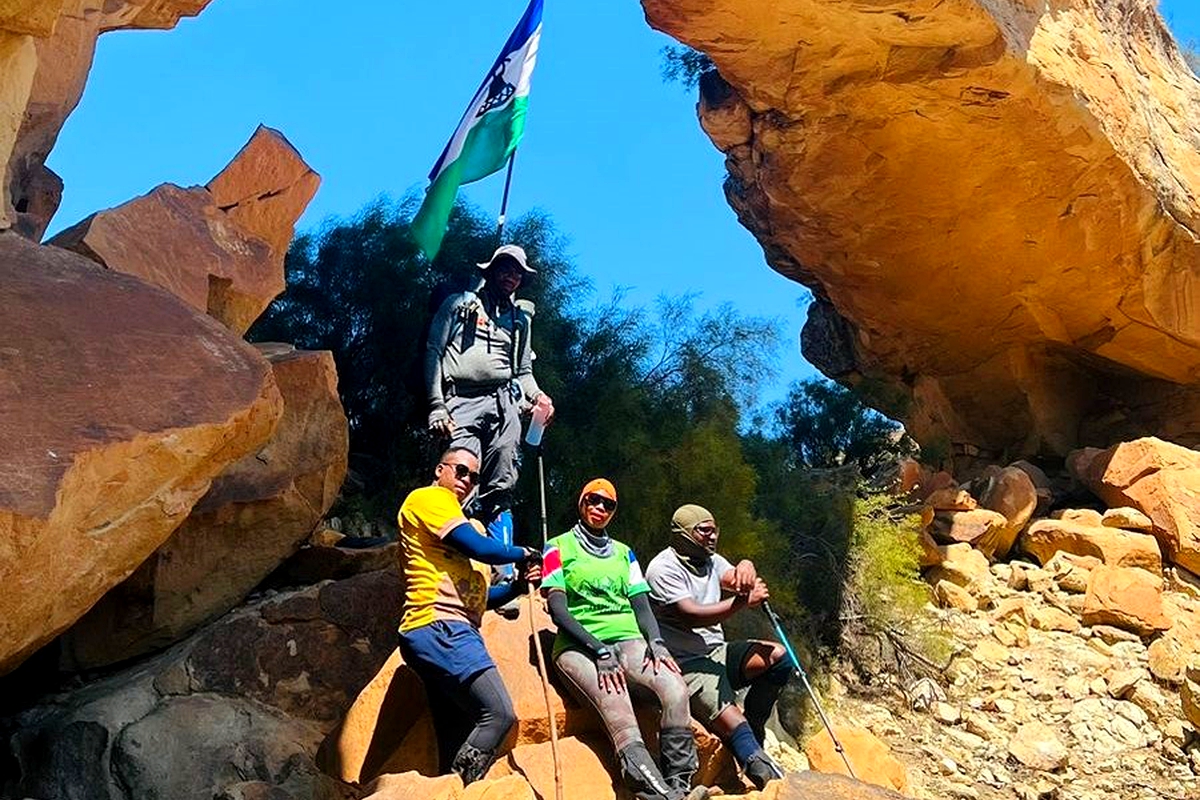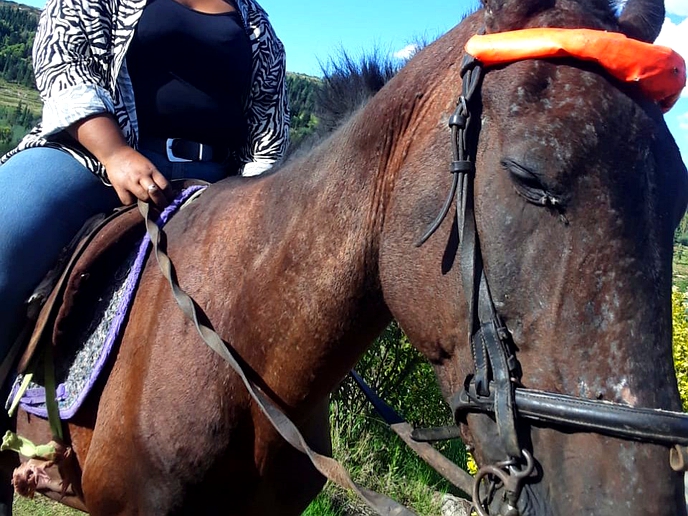SOME people describe Morifi in Mohale’s Hoek as the lowest highest point of any country in the world; others define Thabana Ntlenyana as the highest peak in the Southern African region; but the members of the Thapoha Hiking Club have named their 14-day walk from Morifi to Thabana Ntlenyana as the 3 Ranges Trail.
travel
Oct. 29, 2023
BY MAPAMELA KHANYELA
5 min read
The pleasant torture of the trek

Some of the hikers at the Thabana-Ntlenyane Mountain
Story highlights
The walk is believed to be a lifetime experience that passionate adventurers should never miss.
These are the views of the veterans of Thapoha Hiking Club, the pioneers of a three-range walk from Morifi to the summit of Thabana Ntlenyana on October 14, 2023, following an intensive but enjoyable walk.
The walk sought to establish new and challenging tracks, enjoy the breathtaking landscape of Lesotho, form new friendships, improve domestic tourism, socialise, promote good health, and start and finish the walk at the important destinations of the country, among many other things.
To reach the summit of the highest peak in the Southern African region (3,482 m) from the lowest point (1,389 m), the hikers had to walk for 288.3km, a walk they described as pleasant torture.
The walk included passing through the Maloti, Thaba Putsoa, and Drakensburg Mountain ranges, hence the name 3 Ranges.
In an interview with Maseru Metro Newspaper, 50-year-old Lekoro Ralebese Lekoro, who was among the key leaders of the walk, explained how the walk came about.
“Members of Thapoha Hiking Club planned this walk sometime in 2022 because of the significance of Morifi and Thabana Ntlenyana's spots on the tourism map, and to us, the trek is unique as it offers unique adventure.
“We were also looking for a new challenge to positively contribute to our domestic tourism. We hope to make this walk an annual event and have already invited people to join us next year. Lesotho is among the few countries with these places of interest, and we wanted to establish a new trek for our passionate adventures,” he said, adding that the pace for the walk was friendly and allowed everyone to finish it.
Those who took the 14-day walk first had to pass a test. “We took a walk from Ha ’Makhoroana to Ha Rapokolana; that walk offered the same experience of gaining and losing elevations,” said Ralebese.
He said there were 14 hikers who finished the walk on October 14, 2023, though there were 24 participants who had different destinations.
On that hike, they saw the beauty of Lesotho’s falls, such as Boritsa, Qhoasing, Ketane, and ’Maletsunyane, while also passing through challenging and long passes, such as Ha Mabekebeke Pass.
Another hiker, Retšelisitsoe Mokitimi, 54, mapped the route for the walk and believes that the walk has already enslaved them to come for the next episode in 2024.
He explained that they will continue to develop new hiking products while also changing the lives of Basotho on different hiking routes.
“The walk was not only for adventurers but also contributed to the growth of domestic tourism.
“We have spent about M70, 000 on this walk, which covered accommodation, food, and transport, and most of that money was spent in the villages we passed through. It has been our objective to have a positive impact on the lives of people we interact with as we walk.
“We bought and slaughtered three goats along the way; we hired donkeys and horses to carry our luggage; we paid for the water we used for bathing; in fact, we made friends for our next walk in 2024,” said Mokitimi, adding that the trail is a gift to Basotho.
Lisebo Mositsi, 47, has been hiking for more than 20 years and was among the five women who finished the 14-day hike.
She acknowledges that Basotho should appreciate that Morifi and Thabana Ntlenyana are important destinations for any person interested in adventure in the world and should regard those places as contributors to Lesotho’s economic growth.
“These are two important places for adventures in the world, and any hikers will be happy to visit them. There is a need to protect these places; there has to be controlled entry to Thabana Ntlenyana as well as Morifi. The scattered plastics and other wastes in Thabana Ntlenyana will portray a bad image about us to the world; the relevant authorities have to take the necessary measures to protect these places,” she said.

The hikers at the beginning of their walk
Enjoy our daily newsletter from today
Access exclusive newsletters, along with previews of new media releases.
The list of challenges along the journey was endless, according to the pioneers interviewed. Ralebese listed a number of challenges: “There is a need to educate community members along the route on how they should prepare their homestays. Some of our luggage was damaged while carried by donkeys. Some shepherds would not control their dogs as we passed through some cattle posts, and that may scare away some adventurers,” he said.
Mositsi echoed the sentiments Ralebese: “Community members have to be taught how to receive and serve tourists, and food handling is among the key factors they should be taught about."
Mokitimi was more worried about the appearance of Thabana Ntlenyana.
“The future generations will describe Thabana Ntlenyana in colours. The rocks of that mountain have been painted by those who ascend it; they use different colours to paint their names, giving the mountain a bad image,” he said.
Ending the walk at the summit of Thabana Ntlenyana was a happy conclusion, according to Mokitimi.
“We were overwhelmed as we climbed the mountain; it was covered with snow. Despite being hot in the lowlands of our country, we breathed fresh air while at the highest peak of our region,” he concluded.





